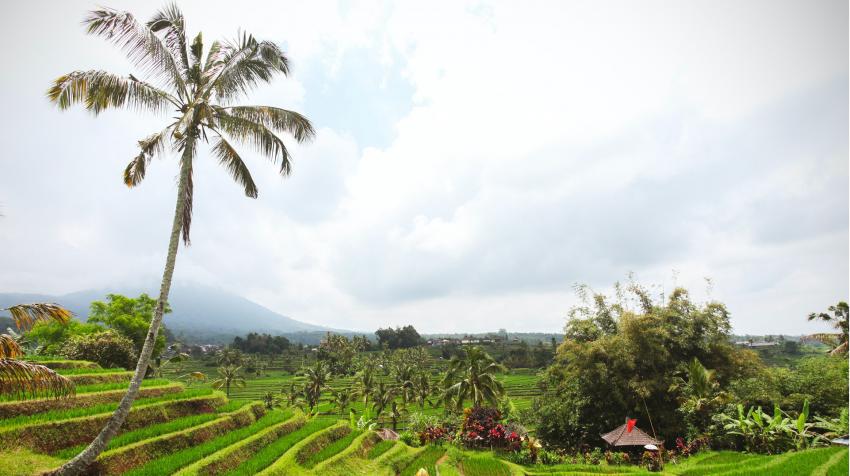More than 2000 years ago, the Greek philosopher Aristotle wrote that the world comprised three climactic zones—the Frigid Zone, the Temperate Zone and the Torrid Zone—and civilized human beings could live in only one of these, the Temperate Zone.1
In 2021, more than 3 billion people live in the Torrid Zone—the Tropics—a place of extraordinary biological and cultural diversity with a complex and sometimes traumatic history. Demographic growth at a faster rate than the rest of the world coupled with environmental challenges mean that achieving sustainable development in the Tropics is essential to securing a sustainable future for our planet.
The inaugural State of the Tropics Report was launched in Myanmar on 29 June 2014. This landmark report, the culmination of a three-year collaboration between 12 leading tropical research institutions, offered a unique perspective on this increasingly important region. Two years later, more than 70 countries joined in co-sponsoring United Nations General Assembly resolution 70/267, by which 29 June was declared the International Day of the Tropics.
The International Day of the Tropics allows us to recognize that the countries and territories located within the Tropics share many unique challenges and opportunities stemming from more than their current and historical political and economic circumstances.
Occupying a distinctive geography between the Tropic of Cancer in the north and the Tropic of Capricorn in the South, the Tropics is a place of extraordinary diversity. In addition to spanning a broad spectrum of socioeconomic and political systems, the Tropics hosts most of the world’s biodiversity and is home to the world’s most linguistically and culturally diverse regions.
The vast majority of countries in the Tropics have, at some point in their histories, been subjected to colonization, and despite large-scale decolonization in the second half of the twentieth century, the impacts continue to be felt. Exploitation, extraction and appropriation of colonial countries’ resources have shaped economies that find it difficult to compete internationally without external support in the form of aid or investment. Additionally, national borders that were drawn by colonizing countries often contribute to complex cultural conditions that exacerbate conflict. In many cases, wealthy countries outside of the Tropics remain the beneficiaries of past colonialism.
Despite these facts, the recent history of the Tropics, in many cases, tells a promising story. Life expectancy continues to increase; disease prevalence has declined; and prior to the pandemic, more children were attending school than ever before. Economic growth remains strong.
However, there are some sobering trends as well, even outside of the impact of the pandemic. Undernourishment has increased for the first time since the turn of the century, and extreme poverty persists. Debt is again a concern for low-income countries and there are now more recognized refugees and internally displaced people than ever in recorded history. Greenhouse gas emissions have continued to rise, and the resulting climate change impacts will be pervasive across tropical communities and ecosystems.

The goals of the 2030 Agenda for Sustainable Development centre around eradicating poverty, ending hunger, and creating a healthier, safer and more sustainable future for the world. The latest available estimates from the State of the Tropics 2020 Report suggest that the vast majority of people living in extreme poverty (85 per cent) live in the Tropics. The disease burden is greater and fewer people have access to essential infrastructure such as electricity, improved water sources and sanitation. It also features tropical rainforests and coral reefs—ecosystems that are essential for a sustainable planet. The data are clear: the 2030 Agenda must be achieved in the Tropics or it will not be achieved at all.
There is also great opportunity in the Tropics. The tropical population is young and increasingly educated, and the countries in this zone make up the fastest growing digital market in the world. Under most projected future scenarios, tropical nations with young and rapidly growing populations, such as India, Indonesia, Nigeria and the Philippines, are set to become major global economies over the next century.
Armed with appropriate training and investment, tropical countries will be able to leapfrog traditional development pathways towards a more sustainable future. Already, e-commerce, innovative recycling and sustainable agriculture are providing new and prosperous futures. Innovative tropical solutions to complex tropical problems are emerging.
We do not yet understand the full impact the pandemic will have on the Tropics, but we know it will be profound. We will likely see the reversal of some key trends, particularly those related to poverty, undernourishment and well-being. Countries and communities with weak health systems and a high dependency on tourism, remittances and commodity exports are likely to be affected the most.
There can be no doubt that it is more important than ever to focus on the people and environments of the Tropics—a healthy, sustainable and prosperous future for the world depends upon it.
The latest State of the Tropics focus report, titled “The Digital Divide in the Tropics”, was published on 29 June, along with a special webinar featuring experts from around the Tropics. You can find information about the webinar and all other State of the Tropics publications at www.jcu.edu.au/state-of-the-tropics.
Notes
1Aristotle, Meteorologica, with translation by H. D. P. Lee (Cambridge, Massachusetts, Harvard University Press, 1952).
The UN Chronicle is not an official record. It is privileged to host senior United Nations officials as well as distinguished contributors from outside the United Nations system whose views are not necessarily those of the United Nations. Similarly, the boundaries and names shown, and the designations used, in maps or articles do not necessarily imply endorsement or acceptance by the United Nations.




